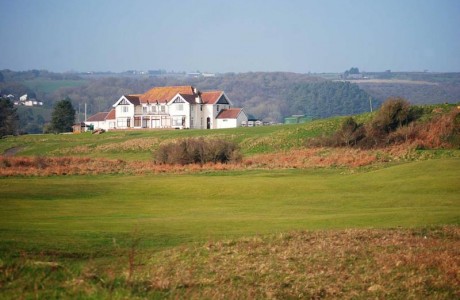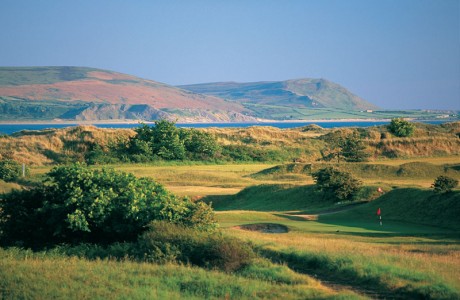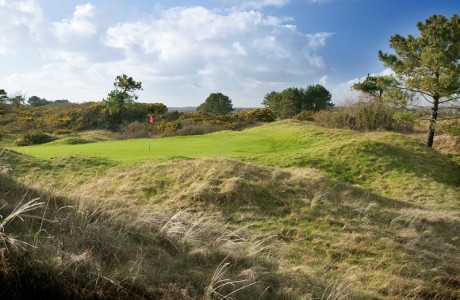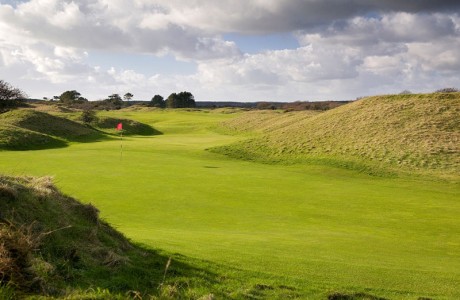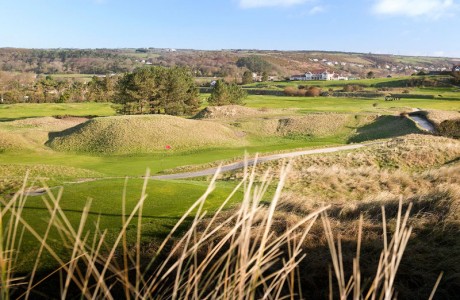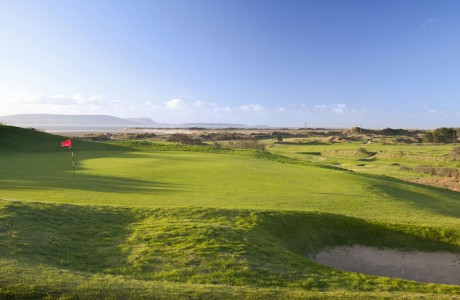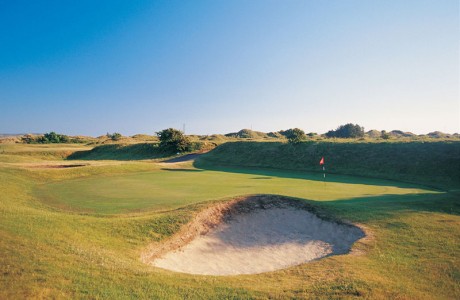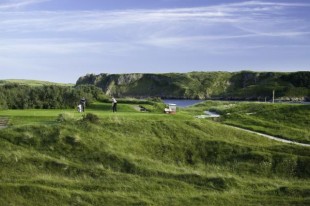| Founded: | 1894 |
| Designer: | J.H. Taylor |
| Championship Length: | 6,624 yards |
| PAR: | 72 |
| Type: | Links |
Ashburnham
Overview:
First impressions of a course from a clubhouse bay window are usually revealing. But not here at Ashburnham, where the first and last holes are entirely untypical of what lies in between. In fact, add in the flat, parallel-running 2nd and 17th, along with the short 16th, and the rest is very much a course within a course.
These remaining 13 holes are classic links. They dive through the dunes with a beguiling combination of blind and open vistas; some are arrow-straight, others are dog-legged – occasionally more than once.
All are completely natural; if it is manicured, target golf you prefer, look elsewhere.
A few are fearsome, a few are (theoretically) straightforward, and every so occasionally Ashburnham throws up the kind of hole that is simply impossible to play without foreknowledge of its perils and secrets.
One such example is the 8th, where the drive is blind in the truest sense of the word, and another is the wonderfully contrary par-five 14th, which calls for a drive to the first of two fairways then a second hit more with hope than certainty over a marker post whose function is not immediately clear.
Elsewhere there are some truly colossal par fours, the 9th and the 15th spring immediately to mind, and some altogether more subtle ones. Take the 12th, which demands a drive down a funnel then turns sharply to the left. The temptation from the tee on this par four of moderate length is to hug the left of the fairway but all that results is a blind and highly awkward second over a hill.
Because this is a traditional links layout – apart, that is, from the first and last few holes – one of the nines will inevitably play much harder than the other. Usually, the hardest stretch comes on an opening half that occasionally reminds one of Carnoustie, with its occasional patches of trees and being often bordered by a fence.
Of these holes that stretch out to the 8th green, the furthest point from the clubhouse, the pick is probably the short 6th. Here the target is a raised green protected by a yawning front bunker and a steep bank on the right. A strong iron shot indeed is required to find the sanctuary of the green.
Ashburnham, or The Ash, as it is known to its members, lacks the visual splendour of a Tenby or a Porthcawl. Much like Aberdovey, it is separated from the sea by a line of tall dunes. These sandhills are a recurring feature of the back nine, which mainly runs in one direction back to the clubhouse. Only at the short 13th is this trend reversed between holes 9 and 15. Curiously, all four of the short holes play in roughly the same direction.
Following a series of flat holes there is a climb to the 16th tee as Ashburnham finishes in similar style to the way it begins.
The 1st is an undistinguished downhill par three and the 16th is similar. The closing hole is unworthy of what has gone before, which is to say it would be a perfectly adequate end to most courses but comes as something of a disappointment here. Measuring little more than 350 yards though playing slightly longer, the tee shot lacks definition while the second calls for a shot to a green at the top of a steep hill.
Many years ago, had Ashburnham’s clubhouse been constructed somewhere near to the 15th green and a little extra land at the far end of the course been used, it is a certainty that it would feature more prominently still when the finest layouts of Britain were under discussion.
Overview courtesy of Ashburnham Golf Club
Testimonials
“Lets not forget the golf, all the courses were amazing and beautiful and the caddies were friendly and knowledgeable and showed great patience. Loved every minute of this trip. Well done!!”
Read more testimonials »Tours that include this Course
The South
Five rounds of golf:
- Royal Porthcawl
- Celtic Manor-Twenty Ten Course
- Pennard
- Tenby
- Ashburnham


